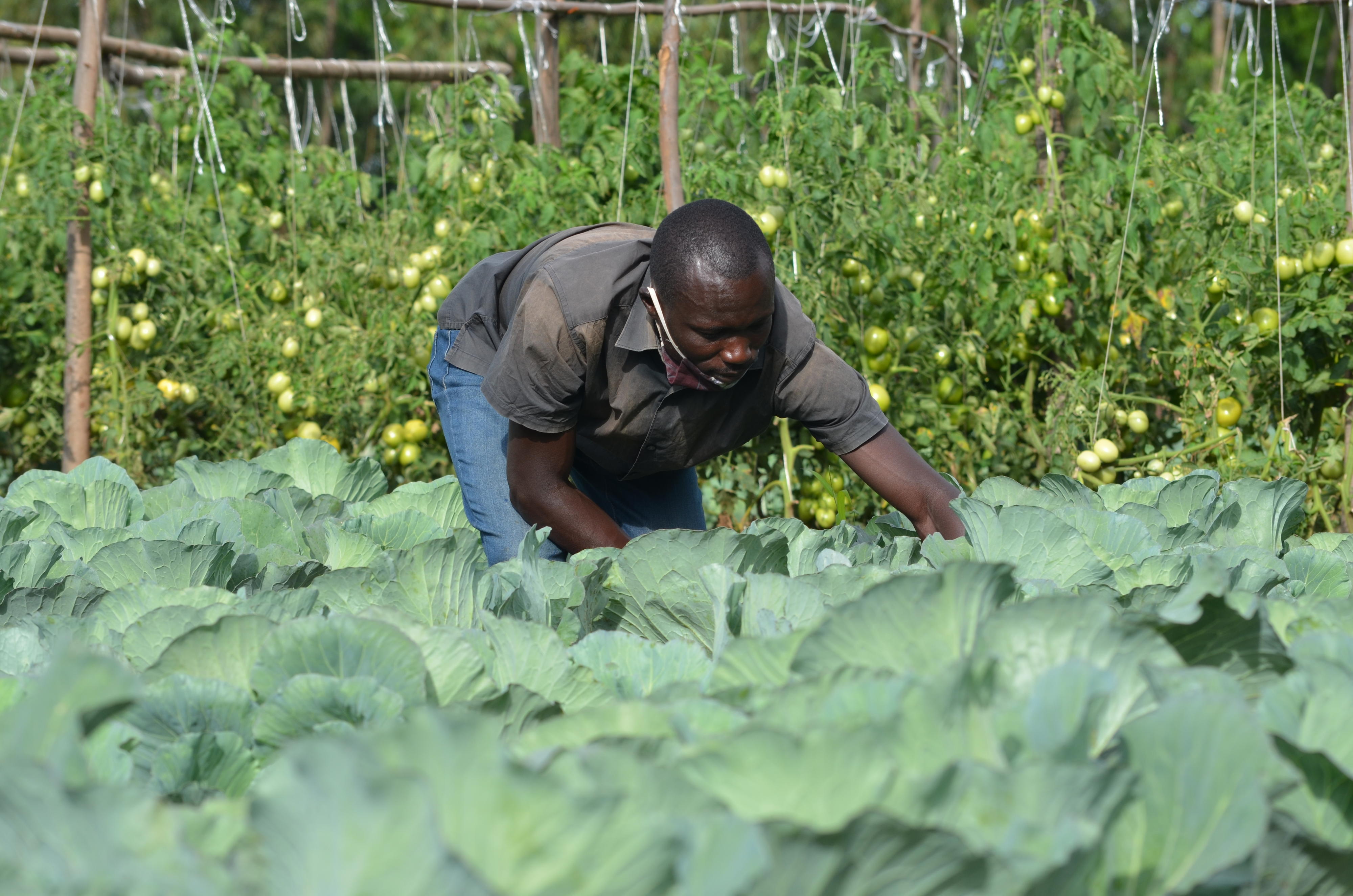Prime
Nitrogen: The critical element that determines cabbage yield

Joel Odama of Imvea village in Terego District tends his cabbage garden. It’s critical to have sufficeint nitrogen. Photo/George Katongole
What you need to know:
- Farmers know that nitrogen is necessary for growing cabbages and other crops, but many do not fully understand its importance for maximising yields.
It is not just how much nitrogen (N) is applied to the cabbage field, but also the stages of application and the importance of understanding how easily it is lost in certain circumstances, argues Doreen Nampamya an agricultural researcher with the Korea Programme on International Agriculture (KOPIA) at the National Agricultural Research Laboratories (NaRL), Kawanda.
She says that it starts with seedlings, which are often lacking in N due to the hardening process in the nursery.
“Soft seedlings are very vulnerable when exposed to harsh conditions after transplanting. The nursery is correct in slowing down the growth rate when the plants are becoming transplant size,” Nampamya says.
However, she says, it is the farmer’s responsibility to ensure that they are topped up with N at transplanting. The easiest and most economical procedure is to apply a closed handful of Limestone Ammonium Nitrate (LAN) to plants prior to transplanting.
“Farmers often complain of unevenness in their transplants’ growth. They even dig up the stunted seedlings to examine the roots and find virtually no root development, and then assume that it is the result of the plants being root-bound due to being in the nursery too long, and then complain to the nursery,” she notes.
Importance of leaves and roots
If the farmer has not applied LAN to the seedlings and the N levels are low in the seedlings, the plants have neither the ability to grow leaves nor are they able to grow roots.
It is an assumption that the plant will immediately start to produce roots to search for N, but they cannot do so with insufficient energy in the plug medium.
“As there are nearly always slight variations in the levels of N in the soil, some plants may have sufficient N close to the plug to be able to start growing roots and thus able to source N from the basic fertilisation and thus grow normally. This causes uneven growth in the field,” she explains.
What exacerbates the problem is that when the seedlings are transplanted, the farmer is required to provide frequent light irrigations, as the difference in structure of the plug medium and the soil restricts the transfer of water from the soil into the plug by capillary action, where the roots are at this stage.
“These light irrigations are important for water to enter the plug from above. The frequent irrigations also result in nitrate being leached beyond the root system,” Nampamya says.
Help the plant meet its objective
By having sufficient N available to the plants at this stage, one gets a uniform stand and the plants immediately start to grow larger leaves, which will result in a big frame to capture sunlight.
Also, by having large leaves spreading soon after transplanting, we get weed suppression. The objective of plants is to produce seeds for the next generation.
She says: “In order to produce more seeds, the plant will put on as much growth as possible both to have more reserves for the flowering process and as an evolutionary element for surviving the competition in the wild, where it would be growing amongst many other species.”
Why nitrogen?
The leaves of plants that receive enough nitrogen have a dark, blue-green colour. Where nitrogen is lacking, the leaves have a pale-green colour and could even be yellow in extreme cases. Plant growth is suppressed because of insufficient photosynthesis.
In the case of maize and sorghum, a V-shaped pattern on the leaf tips is a sign of nitrogen deficiency. The leaf edges die off, inhibiting plant growth. Nitrogen is found in the soil and atmosphere. Legumes work with bacteria to ‘fix’ (trap) nitrogen and make it available to the plant.




